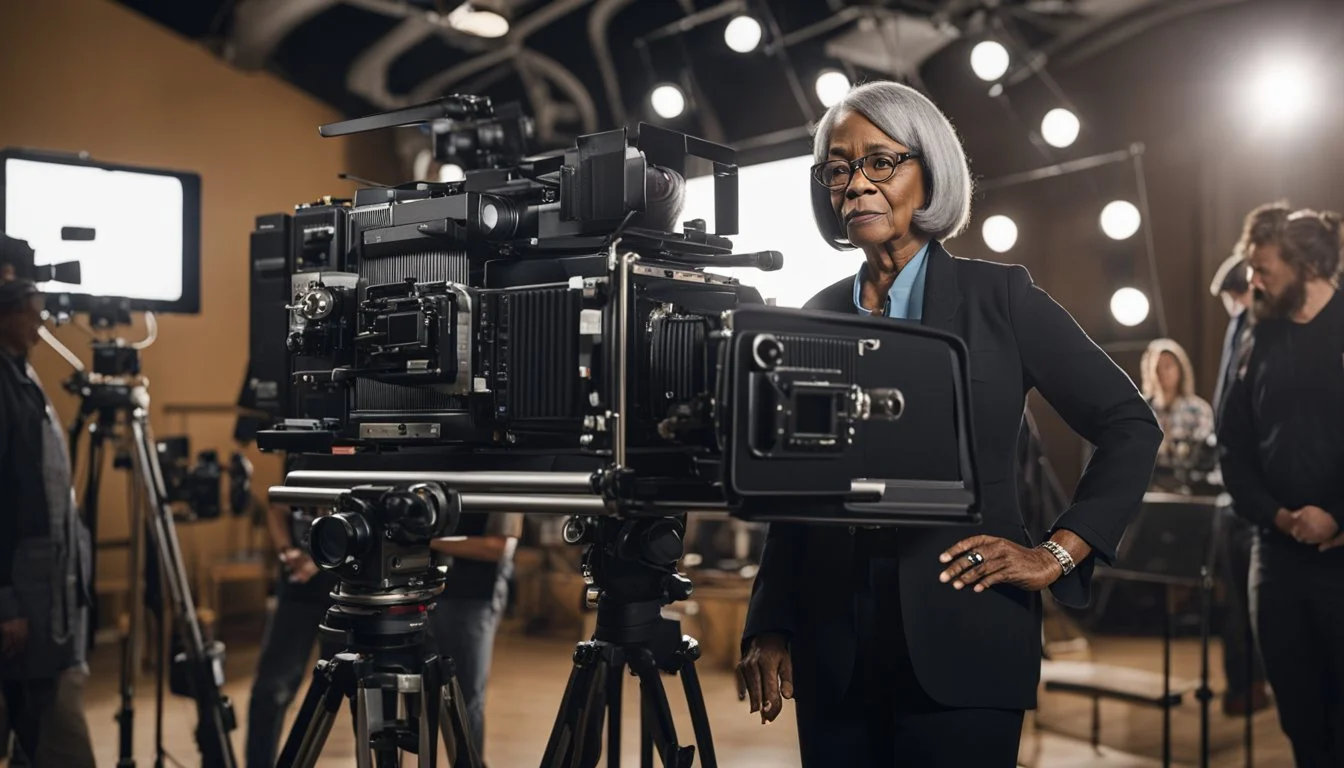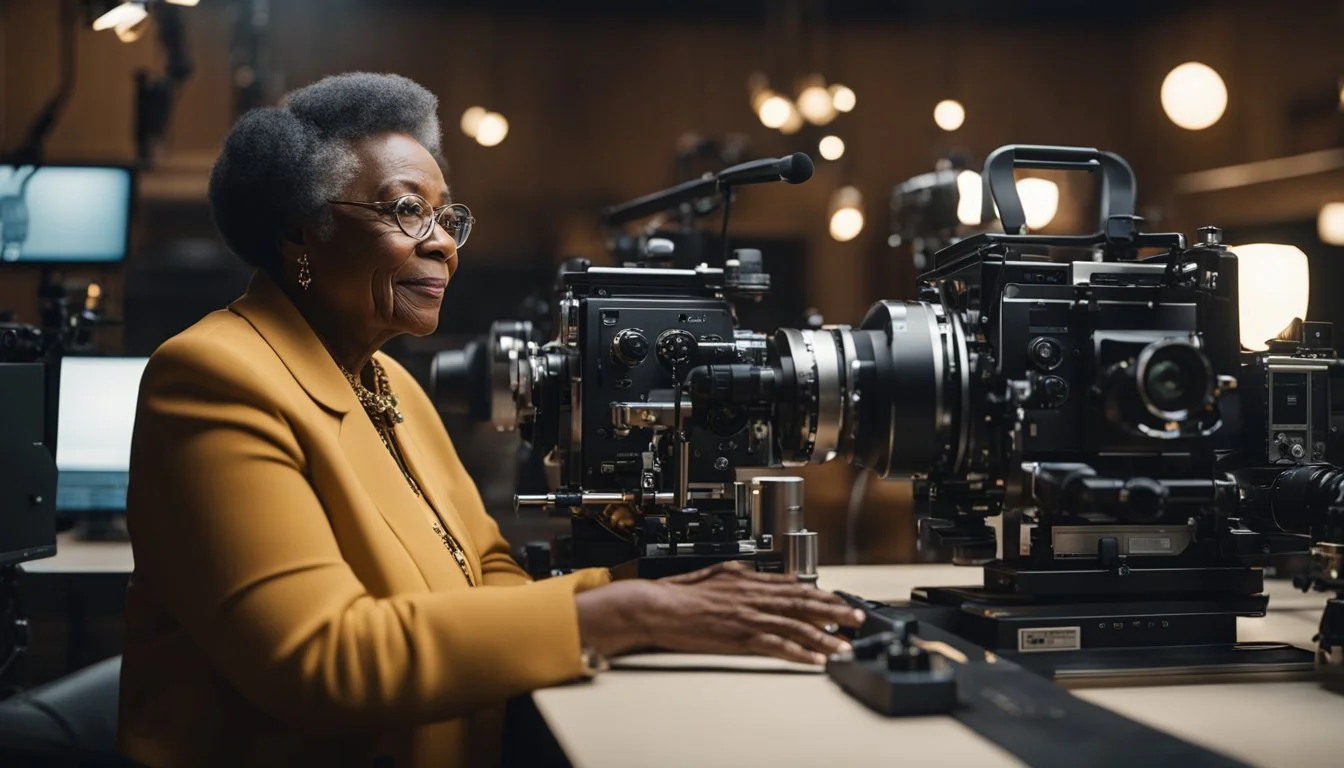Shirley Clarke: Breaking Barriers as a Female Filmmaker in a Male-Dominated Industry
Shirley Clarke was a pioneering American filmmaker who defied societal norms and made a significant impact in the male-dominated world of cinema. Born Shirley Brimberg in New York City in 1919, she pushed the boundaries of conventional filmmaking with her innovative techniques and bold subject matter. As the only woman among the 28 signatories of the 1961 New American Cinema Manifesto, Clarke's dedication to her craft and her willingness to address controversial topics set her apart from her contemporaries.
Clarke's works, including "The Connection" and "The Cool World," showcase her commitment to authenticity and social commentary. She bravely chose to work with Black non-actors and crew members during an era when such choices were rare and often criticized. Her vision extended beyond mere storytelling; it was about creating a platform for underrepresented voices and bringing the raw reality of marginalized communities to the forefront.
Despite facing numerous challenges, Clarke's contributions to the film industry have left an indelible mark. Her legacy is celebrated through retrospectives at prestigious institutions like the Harvard Film Archive, underscoring her enduring influence and the importance of her work in shaping modern cinema.
Early Life and Education of Shirley Clarke
Shirley Brimberg, later known as Shirley Clarke, was born on October 2, 1919, in New York City. She was the eldest of three daughters. Her father was a Polish immigrant and a successful manufacturer. Her mother came from a wealthy Jewish family, with her grandfather being a multimillionaire inventor.
Growing up in a privileged yet complex environment, Clarke was exposed to both affluence and high expectations. From a young age, she showed an interest in dance, experimenting with various styles. This passion for dance played a significant role in her early artistic expressions.
Despite her intelligence and ambition, Clarke had difficulties conforming to traditional education systems. Her restless nature led her to seek alternative modes of learning and self-expression. She attended several schools but found herself constrained by their rigidity.
In the 1940s, Clarke pursued dance more seriously. She studied under renowned choreographers at prestigious institutions. This formative period shaped her creative outlook and reinforced her desire to challenge societal norms.
By the late 1940s, Clarke began shifting her focus from dance to filmmaking. Her educational pursuits included studying at the experimental film school run by Hans Richter, where she explored avant-garde techniques and began developing her unique voice in cinema.
Throughout these years, Clarke's early life experiences and educational background laid the groundwork for her future as a groundbreaking filmmaker. Her journey from a dancer to a filmmaker was marked by a continuous quest for creative freedom and innovation.
Career Beginnings
Shirley Clarke's journey into filmmaking began within the independent film scene, where she first gained recognition through her short films. These early works laid the groundwork for her reputation as a pioneering female filmmaker.
Independent Filmmaking Scene
Shirley Clarke entered the independent filmmaking scene during a transformative period in American cinema. Born in New York City in 1919, she initially pursued a career in modern dance before shifting to film.
Her background in dance contributed to her unique visual style. Clarke's entry into the independent filmmaking world was marked by her involvement with the New American Cinema movement, which aimed to produce innovative and experimental films outside the Hollywood system.
This movement provided Clarke with the freedom to experiment with narrative and form. Her work was characterized by a blend of documentary and fiction, a technique that she would use throughout her career. Clarke’s dedication to this craft helped her break into a male-dominated industry.
Short Films and Early Recognition
Clarke’s early forays into filmmaking included several notable short films. One of her first successes was "Bridges-Go-Round" (1958), an experimental short that showcased her innovative editing and camera techniques. This film, along with others, helped her gain recognition at various film festivals.
Another significant work was "Skyscraper" (1959), a documentary short co-directed with Willard Van Dyke, which earned an Academy Award nomination. Her ability to blend art and documentary filmmaking garnered critical acclaim and set the stage for her later works.
Clarke’s early films were crucial in establishing her reputation as a serious filmmaker and paved the way for her subsequent feature films. Her fearless exploration of social and cultural themes distinguished her in the world of independent cinema.
Major Works and Achievements
Shirley Clarke's career features a number of groundbreaking films that highlight her unique vision and pioneering efforts in the realm of avant-garde cinema. She is especially recognized for her daring explorations of social issues and innovative cinematic techniques.
The Connection
The Connection (1961) is Clarke's first feature film and an adaptation of a play by Jack Gelber. This film explores the lives of jazz musicians and their struggles with heroin addiction. Clarke's use of a faux-documentary style and handheld camerawork brought an authentic feel to the film, challenging conventional narrative structures of the time. The Connection garnered critical acclaim and won the Critic’s Prize at the Cannes Film Festival, establishing Clarke as a significant voice in independent cinema.
The Cool World
The Cool World (1963) marks Clarke's foray into the gritty realities of Harlem life. The film portrayed the harsh realities faced by African-American teenagers. Clarke worked with a largely non-professional cast, including many local residents. The film's raw and unfiltered portrayal of urban youth earned it a place in the canon of social realism in American cinema. Despite its controversial subject matter, The Cool World was praised for its honest depiction of life in the ghetto and Clarke’s collaborative and brave filmmaking style.
Portrait of Jason
Portrait of Jason (1967) is one of Clarke's most influential works, focusing on a single night in the life of Jason Holliday, a gay African-American hustler and aspiring cabaret performer. The film is notable for its intimate, unflinching, and often uncomfortably close look at Jason’s life and personality. This film is a significant achievement in the documentary genre, capturing complex themes around race, sexuality, and identity. Clarke’s willingness to present Jason's story with minimal intervention speaks volumes about her commitment to presenting authentic voices.
Innovative Techniques and Styles
Clarke’s innovative techniques and distinct style set her apart from many filmmakers of her era. She often employed a "choreography of images," blending elements of dance, rhythm, and visual motion. This approach is evident in her experimental video works from the 1970s, such as Tongues, in collaboration with Sam Shepard and Joseph Chaikin, which pushed the boundaries of what video art could express. Her pioneering use of handheld cameras, real locations, and non-professional actors laid the groundwork for contemporary independent filmmaking and documentary realism.
Challenges Overcome
Shirley Clarke faced numerous challenges as a pioneer female filmmaker. In an industry traditionally dominated by men, she navigated significant obstacles to get her films produced and recognized.
Securing funding for her projects was a continual struggle. The film industry tended to be risk-averse, making it difficult for female directors to obtain financing, especially for unconventional projects.
Clarke confronted resistance when she chose to work with non-professional actors and crew members. Her decision to include Black non-actors in "The Cool World" was seen as controversial and met with criticism.
Media portrayal added another layer of complexity. Clarke was often positioned as a courageous auteur in the press, but her innovative choices were not always celebrated within professional circles.
Despite these barriers, Clarke persisted. She maintained a clear vision and commitment to authentic storytelling, even when mainstream channels did not support her work.
Her determination to break new ground and provide unique perspectives has made a lasting impact. Shirley Clarke's story is one of resilience and unwavering dedication to her craft.
Influences and Contributions to Cinema
Shirley Clarke made significant impacts on independent filmmaking and the development of documentary style in cinema. Her work challenged social norms and provided fresh, unfiltered perspectives on real-life experiences.
Influence on Independent Filmmaking
Shirley Clarke emerged as a pioneering figure in the New American Cinema movement during the 1950s and 1960s. Driven by an avant-garde spirit, she sought to create films outside of Hollywood’s conventional system, advocating for creative freedom and personal expression.
Her film "The Connection" exemplifies this ethos, offering a bold narrative about drug addiction using non-professional actors. Clarke’s approach paved the way for future filmmakers to explore complex and controversial subjects within independent cinema.
Contributions to Documentary Style
Clarke's documentary work displayed her commitment to authenticity and social commentary. Her groundbreaking film, "Portrait of Jason," focused on the life of Jason Holliday, a gay African American man. The film presented an unfiltered, intimate look into his life, revealing layers of character often hidden in mainstream media.
"The Cool World" further demonstrated her innovative techniques by incorporating both professional actors and real residents from Harlem. This blend provided viewers with a raw and honest portrayal of urban life, making Clarke a trailblazer in documentary realism and cinéma vérité.
Later Career and Legacy
In her later years, Shirley Clarke focused on teaching and mentorship, leaving a lasting impact on future generations of filmmakers. Posthumously, her work gained significant recognition, solidifying her legacy.
Teaching and Mentorship
Clarke dedicated a substantial portion of her later career to education. She taught film at various institutions, including UCLA and NYU. Through her guidance, many students were inspired to pursue careers in filmmaking. Clarke's workshops often emphasized experimental techniques and independent production methodologies.
Her approach to teaching was hands-on, encouraging students to explore non-traditional narrative structures and innovative uses of technology in film. Clarke's influence extended beyond the classroom as she often mentored young filmmakers, offering advice and support even after formal instruction ended. Her role as an educator and mentor was crucial in fostering new talent in the independent film community.
Posthumous Recognition
After her death in 1997, Clarke's contributions to cinema received widespread acknowledgment. Her films, initially overlooked, were rediscovered by modern audiences and critics alike. Major institutions like MoMA and the Harvard Film Archive hosted retrospectives of her work, showcasing her innovative approach to filmmaking.
Clarke’s films were praised for their bold visual style and social commentary, highlighting her as a pioneering figure in American cinema. Documentaries and scholarly articles have since explored her influence, ensuring that her legacy endures. Her work's inclusion in various film curricula underscores her lasting impact on the industry, bridging the gap between past innovations and future filmmaking trends.
Impact on Female Filmmakers and Diversity
Shirley Clarke’s trailblazing work provided a significant boost to female filmmakers. By pushing the boundaries of cinema, she created opportunities for women in a male-dominated industry.
Her choice to work with Black non-actors and crew members in films like The Cool World showcased a commitment to diversity. This decision enriched the film narrative and brought underrepresented voices to the forefront.
Alice Guy-Blaché, another pioneer, directed over 1,000 films. Her work, alongside Clarke's dedication, highlighted the contributions of women in the early and mid-20th century, paving the way for future generations.
Key Contributions:
Breaking gender barriers
Promoting racial diversity
Innovating with non-traditional actors
Clarke's influence extended beyond gender, inspiring filmmakers to explore themes of race and social justice. Her focus on authentic representation challenged stereotypes and opened dialogue on crucial societal issues.
This commitment to authenticity and inclusion in storytelling resonated with many filmmakers. Clarke’s legacy continues to inspire a new generation dedicated to creating diverse and inclusive cinema.
Shirley Clarke's Filmography
Shirley Clarke's filmography reflects her pioneering spirit in independent cinema. Her innovative work spans several decades and encompasses a range of styles and themes.
Key Films
The Connection (1961): Clarke's feature debut, based on a play by Jack Gelber. It's a bold exploration of jazz musicians and addiction.
The Cool World (1964): Set in Harlem, this film mixes documentary and fiction to portray urban youth culture. Clarke worked with Black non-actors, providing a rare perspective.
Portrait of Jason (1967): A groundbreaking documentary capturing a day in the life of Jason Holliday, a Black gay hustler. The film is celebrated for its raw, unfiltered approach.
Other Notable Works
Bridges-Go-Round (1958): An experimental short using New York City bridges as its subject, combining visual art with jazz and electronic music.
Robert Frost: A Lover's Quarrel With the World (1963): A documentary about the poet Robert Frost, which won an Academy Award for Best Documentary Feature.
Later Projects
Ornette: Made in America (1985): A documentary on jazz musician Ornette Coleman, blending performance with biographical elements. It showcases Clarke’s continued interest in the intersection of music and film.
Clarke's influence is evident in her innovative techniques and dedication to socially responsible filmmaking. Her filmography remains a testament to her skill and vision.
References and Further Reading
Books and Articles:
Persistence of Vision: An Immediations Reader by Shirley Clarke – A comprehensive collection of essays and interviews.
A Woman in Motion: The Films of Shirley Clarke by C. Roemer – Analyses Clarke's cinematic techniques and contributions.
Harvard Film Archive, "To the Beat of Shirley Clarke" – Coverage of Clarke's work and impact.
Films:
The Connection (1961) – Explores jazz culture and addiction.
Portrait of Jason (1967) – Focuses on the life of a Black gay man and is known for its ahead-of-its-time social commentary.
The Cool World (1963) – Offers a perspective on Harlem's youth, blending fiction and documentary styles.
Academic Journals:
Sight and Sound – Includes profiles and critical essays.
Journal of Cinema and Media Studies – Features scholarly articles that discuss Clarke's impact on American avant-garde cinema.
Websites:
Harvard Film Archive – Hosts retrospectives and articles.
The New Yorker – Provides critical analysis and reviews of Clarke's films.
Wikipedia: Shirley Clarke – A broad overview of her life and career.
Special Databases:
JSTOR – Contains academic papers discussing Clarke's films.
Film & Television Literature Index – Offers articles and critical essays on her work.
These resources provide valuable insights into Shirley Clarke’s career and her pioneering role in filmmaking.





